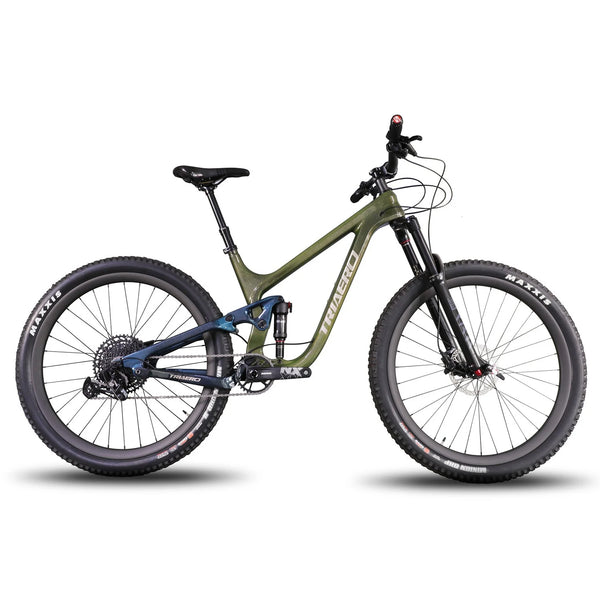Are the Chinese carbon frames any good?
Some western cyclists are dubious about buying a Chinese-made carbon frame. Their main objection seems to be based on price – on the supposition that the most expensive item must be the best. This attitude has caused luxury liquor and cosmetic brands to flourish in the West.
These days, some cyclists boast about how much their machines cost them. A steel, hand-crafted English pro competition frame used to cost $22 in 1958; today, inflated prices are around $2670. There’s even an untruth that Chinese carbon frames cost less because they are made by robots – like Tesla cars. And the Chinese industry is also accused of being a newcomer – a Johnny has come lately on the world market.
Let’s move on to demolish some fallacies about Chinese carbon frames. Firstly, the notion that the industry is recent and opportunistic.
China has been a great world cycling nation since 1950 when Huo Baji took the 1933 English Raleigh Roadster as his model and launched the legendary Flying Pigeon brand. In the ensuing 70 years, China was known as the Kingdom of Bicycles. The price of a single-speed Flying Pigeon was 150 yuan, or four months of a worker’s salary, with a years-long waiting list.
In 2005, the Western pop star Katie Melua had a big hit, a love song with this title: There are nine million bicycles in Beijing. No one disputed that figure, for the factory has claimed to have turned out 500 million bikes since 1950. Today, Flying Pigeons are in use throughout China. They are still featured at the annual Shanghai Bike Show, which has 6000 booths and is visited by industry figures worldwide.
Regarding design, the Chinese industry relies on local and international research and talent. Cutting-edge frame geometry may be dreamed up by a genius at a drawing board in Shenzhen, Toronto, Milan, Birmingham, or New Jersey. ‘Copycat’ frames are few and far between, and basic research is ongoing. The truth of the robot assembly falsehood is this: a lot of skilled handwork goes into a Chinese carbon frame before and after the oven.
This begins with a layup using Toray 700 and 800 fiber. It takes a worker two hours to complete the layup, applying polymer resin to fiber on a jig, and adding as many as 500 strips, one after the other, in a special sequence. There are no shortcuts, and each strip is designed to maximize the frame’s performance. Everyone must be precisely placed in a specific sequence to meet design parameters. Reinforcing strips underlay parts that will be drilled, or elements such as stays and bottom brackets, must be as rigid as possible. Complicated structures like the head tube are laid up separately and added later. Inside the tubes is a disposable mandrel, which maintains the inner shape. This may be inflatable and is destroyed by the oven heat or removed later.
The laid-up frame goes in a mold, costing as much as $ 200,000. And each size of a particular model requires its mold. So carbon frame manufacture is not for chancers or fly-by-night companies. After being covered in a plastic sheet which is sucked down by a vacuum, the frame and mold go into the oven for 60 minutes. When the carbon frame has cooled and is lifted out of the mold, it’s a pretty rough-looking diamond, even though it’s very light and rigid. It takes an average of 90 minutes for a skilled worker to sand and polish the frame to make it smooth.
The next stage is in a clean room for coats of spray paint. When the paint is dry, water transfer decals are applied before a final spray with a clear coat. Then comes an unforgiving quality control process. Some manufacturers use a vibratory stress test – while others go to the extent of X-raying the frames.
To compare two examples of top-drawer pro frames in carbon, the ICAN A9 is a state-of-the-art Chinese road frame that comes with a carbon seat post, stem, and bars for $930. One may be forgiven for thinking that some magic dust was sprinkled on an example of the US-made Specialized S-works Aethos frame. In slightly-used condition, the asking price was $5000.
We have no room for a full analysis of the price differentials in such a brief article. The key question is, why are non-Chinese carbon frames so expensive? Both the frames went through the processes outlined above, more or less. And by now, the reader is probably asking, does ICAN sprinkle magic dust on the A9 frame so that it sells for only $930? The answer is no.
The factories of China produce a quality product and sell it at a reasonable margin. No Chinese bike factory has left the business because it charged too little for its products. The cause of the price differential is multifactorial: Marketing, forex rates, distribution, tariffs, duties, salaries, international markets, merchandising, advertising, etc. The list goes on. And for the present, the main thing a reader should know is this. Regardless of the retail price, Chinese carbon frames match any product manufactured elsewhere.
ICAN Trail Bike P1 is specially designed for trail. You can ride fun in mind, finding every bit of enjoyment out of their riding.
Trail Bike P1-Custom Paint-Sram NX EAGLE
ICAN Enduro 29er MTB bike is another great option on trail bikes, providing stability, smoothing out any bumps and enabling a faster ride.


